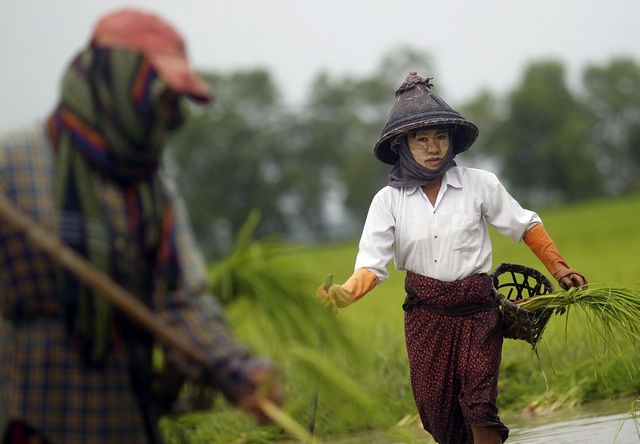The Myanmar Rice Millers Association (MRMA) has stressed the need for setting up modernized rice milling units in the country to be able to increase exports of high-quality 5 percent broken rice, according to local sources.
The MRMA noted that Burma’s high-quality 5 percent broken rice (locally known as tann myint) has huge demand from Europe and Japan, but local millers lack facilities to meet the demands. They say sophisticated milling units with rice polishers and colour-sorter machines, which can produce high-grade 5 percent broken rice, are needed to keep abreast with the market needs. Currently, there are less than 10 high-tech and modernized rice mills that can produce 100 to 400 tons in the country, according to the MRMA. Owing to the high cost of producing 5 percent broken rice, most of the millers have stopped its production.
The MRMA has been demanding government assistance in setting up hi-tech milling units but the government has allegedly been indifferent to the rice millers’ demands. The Association says even the 25 percent broken rice (locally known as ae-ma-hta), which is largely exported to Africa, and many other varieties of rice produced in Burma do not get higher prices in foreign markets as they are not polished during the milling process.
Also, falling rice prices and surging electricity charges have forced many small- and medium-sized millers to shut down their operations, says a former MRMA chairman. MRMA data shows that there are about 2,000 regular mills with an average milling capacity between 15 and 100 tons.
[related]
The Myanmar Agribusiness Public Corporation (MAPC) is constructing new parboiling rice mills with a combined capacity of 200,000 tons and 300,000 tons of parboiled rice annually. The general secretary of MRMA expressed hope that the government takes some initiative to construct a few tann myint mills also in the country.
Burma’s government is keen on regaining its once top rice exporter status and accordingly plans to increase its rice exports to about three million tons over the next five years, up almost three times the current exports of around one million tons. It is also working on a new trade policy and would help rice exporters gain access to new markets. However, inadequate funding and government subsidies are discouraging farmers from producing high-quality rice suitable for international sales, say local sources.
USDA estimates Burma to export 1.3 million tons of rice in 2014 (January – December), up 12 percent from an estimated 1.16 million tons in 2013. The agency estimates the country to produce 12 million tons of rice in 2013-14, up about 2 percent from an estimated 11.7 million tons in 2012-13.
This article was originally published in Oryza on 5 June 2014. Oryza is an industry leader in rice and a media partner of DVB.



